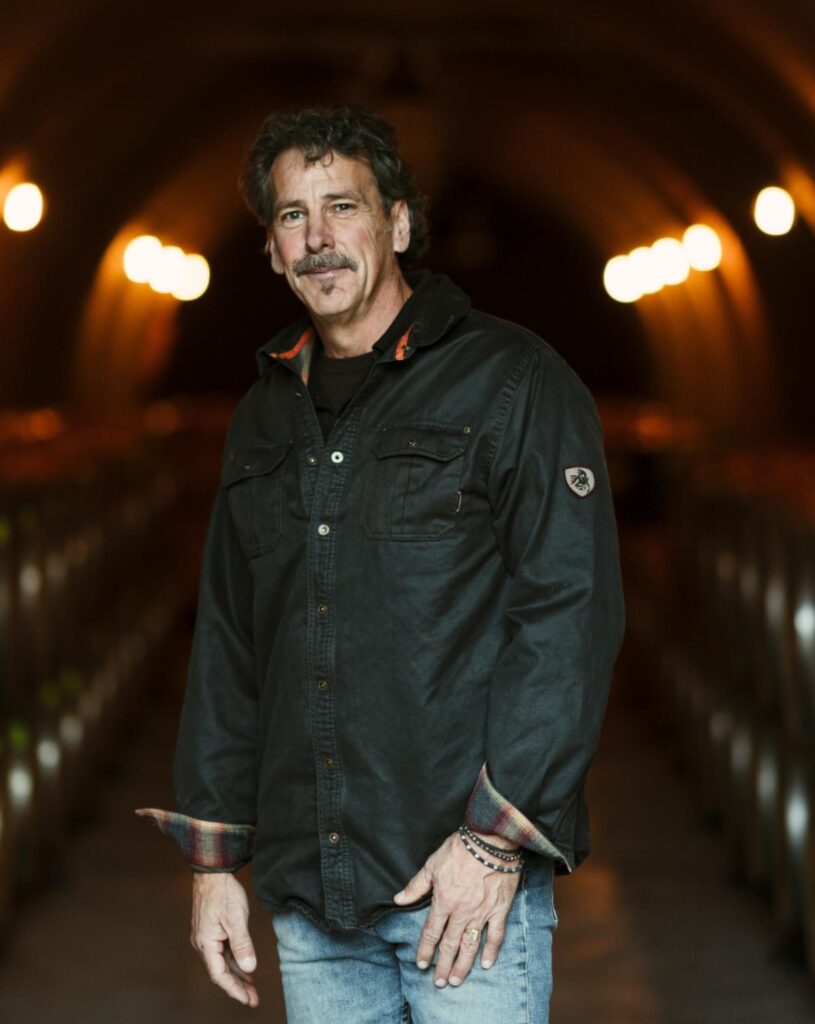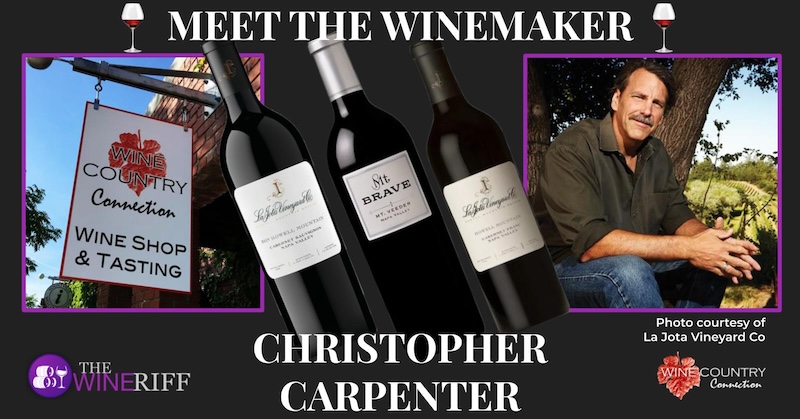WINEMAKER INTERVIEW
WITH WINE COUNTRY CONNECTION AND
CHRISTOPHER CARPENTER
SOME BACKGROUND ON
CHRIS CARPENTER

By 1998, Chris returned to Napa Valley, where he joined Cardinale Estate. Today, he is a winemaker for some of Napa Valley’s most acclaimed wineries, including Cardinale, Lokoya, La Jota Vineyard Co., Mt. Brave, Caladan, and even Hickinbotham in Australia. Over the last 20 years, Chris has become known for crafting bold, structured Cabernet Sauvignons, mastering the art of taming mountain tannins. He collaborates closely with vineyard teams to honor each block’s distinct character, crafting wines that embody the depth, complexity, and historical legacy of Napa’s rugged mountains. His winemaking philosophy revolves around meticulous vineyard care and minimal intervention in the cellar, ensuring that each bottle reflects the purest expression of the land.
Sign up to our Email List to Get Notified of Members’ Specials, New Releases and New Discoveries. Click here to sign up. There is no obligation and you can unsubscribe anytime.
Five Questions with Winemaker Chris Carpenter
WCC: What is your favorite varietal to work with, and why?
CHRIS: I like working with them all, but the one I get the most satisfaction from seeing people respond to is Merlot. Why? I’m always for the underdog; I am hyper-competitive, and it drives me nuts that the French and Italians own this category at the highest levels of collectible wine, and we struggle with it. I know that the mountains in Napa can produce some of the best Merlot in the world, and I want to spread this knowledge as much as possible.
WCC: In your experience, what proves to be the most challenging aspect of being a winemaker?
CHRIS: Patience, especially during harvest, both in the vineyard and the winery. It’s easy to react to observational or analytical data in the moment. It’s challenging not to in certain instances. Still, I’ve learned that if you take a step back and look at challenges from different angles or with the benefit of additional eyes or analysis, the panic mode decision that will often send your vineyard or wines in a direction you’d rather them not go can be avoided.
WCC: How do you approach creating a new wine, and what factors influence your decisions in the winemaking process?
CHRIS: I look at what we have already created and what sources we already use and try to come up with something unique, stylistically, and geographically. When we created Caladan, which was going to be a cab franc-based brand, I looked at what cab francs we were already producing: La Jota from Howell Mt, Mt Brave from Mt Veeder. Arguably, it is on the power-oriented side of Cab Franc, with a true expression of the appellation from which they derived. So we already had that. What I saw as an opportunity is a more elegant expression, multi-appellated and blended with merlot in homage to the right bank. So, creating a wine that speaks for itself and wouldn’t be a version of something else I already made with just a different name.
WCC: Are there any specific trends or innovations in the wine industry that you’re least excited about and why?
CHRIS: Natural wines that are not being made with responsible winemaking. Let me be clear: some natural wines are good. Mostly because the winemakers who make good versions are taking the time to try and keep the microbial spoilage organisms to a minimum. On the other side are the wines with huge microbial flaws that do not taste good. We have enough challenges right now getting people to choose wine rather than spirits, RTDs or craft beer, we don’t need people turned off by wine that tastes like swamp water that’s been aging in a boot worn by a stablehand at the elephant enclosure at the SF Zoo. This is also a matter not only of responsible winemaking but also of responsible sommeliers turning people on to what’s good, not what’s hip.
WCC: Can you share a unique aspect about yourself that people may not be aware of?
CHRIS: I am terrified of carnies, you know, circus folk. Little hands, smell like cabbage.
Here are some wines Chris made. Click on the name to read more and to order.
LA JOTA 2019 HOWELL MOUNTAIN CABERNET SAUVIGNON – $175 (95-96 Points)
LA JOTA 2019 HOWELL MOUNTAIN CABERNET FRANC – $125 (Triple 95-Point Ratings)
MT. BRAVE 2019 MT. VEEDER CABERNET SAUVIGNON – $125 (96-97 Points)
NOTE: All wines offered for sale on this website are sold through our affiliate and fulfillment partner, Wine Country Connection.
WARNING: Drinking distilled spirits, beer, coolers, wine and other alcoholic beverages may increase cancer risk, and, during pregnancy, can cause birth defects. For more information go to www.P65Warnings.ca.gov/alcohol.


